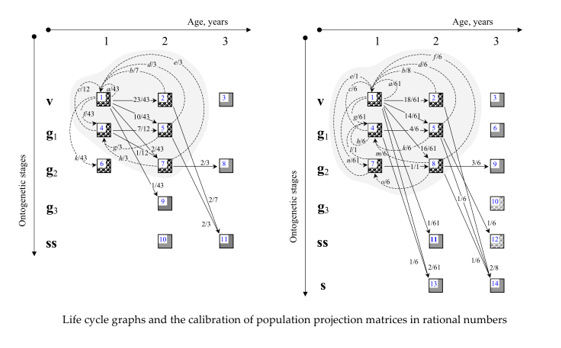Preprint
Article
Potential-Growth Indicators Revisited: More Merits of Indication
Altmetrics
Downloads
230
Views
202
Comments
0
A peer-reviewed article of this preprint also exists.
supplementary.zip (170.33KB )
This version is not peer-reviewed
Submitted:
31 May 2021
Posted:
01 June 2021
You are already at the latest version
Alerts
Abstract
The notion of potential-growth indicator came to being in the field of matrix population models long ago, almost simultaneously with the pioneering Leslie model for age-structured population dynamics, albeit the term has been given and the theory developed only recent years. The indicator represents an explicit function, R(L), of matrix L elements and indicates the position of the spectral radius of L relative to 1 on the real axis, thus signifying the population growth, or decline, or stabilization. Some indicators turned out useful in theoretical layouts and practical applications prior to calculating the spectral radius itself. The most senior (1994) and popular indicator, R0(L), is known as the net reproductive rate, and we consider two more ones, R1(L) and RRT(A), developed later on. All the three are different in what concerns their simplicity and the level of generality, and we illustrate them with a case study of Calamagrostis epigeios, a long-rhizome perennial weed actively colonizing open spaces in the temperate zone. While the R0(L) and R1(L) fail respectively because of complexity and insufficient generality, the RRT(L) does succeed, justifying the merit of indication.

Keywords:
Subject: Computer Science and Mathematics - Discrete Mathematics and Combinatorics
Copyright: This open access article is published under a Creative Commons CC BY 4.0 license, which permit the free download, distribution, and reuse, provided that the author and preprint are cited in any reuse.
MDPI Initiatives
Important Links
© 2024 MDPI (Basel, Switzerland) unless otherwise stated





